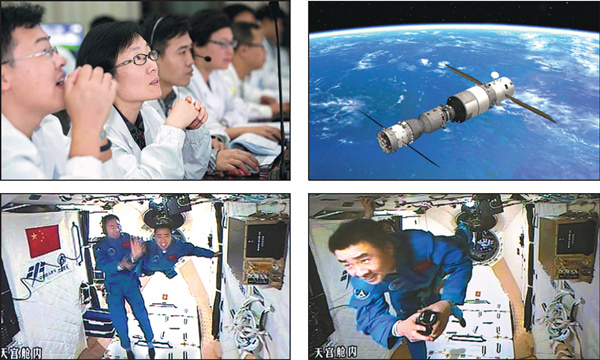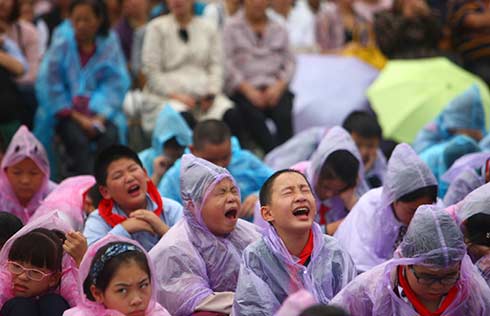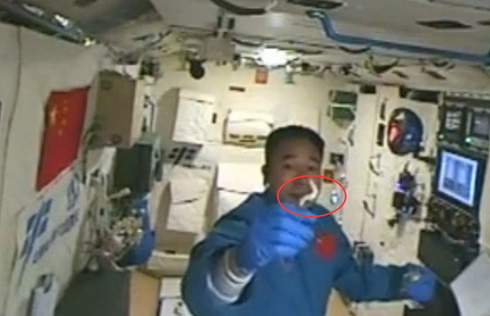Space program advances in heavens and on Earth
Astronauts enter high-tech lab on national TV while scientists start shaping future
 |
|
Clockwise from upper left: Scientists fix their gaze on monitors at Beijing Aerospace Control Center as Shenzhou XI prepares to dock with the Tiangong II space lab on Wednesday. The two spacecraft dock, in this artist's rendering. Chen Dong floats in the space lab. Jing Haipeng, left, and Chen greet viewers shortly after entering the space lab. [Photo/Xinhua] |
When the astronauts left their "divine vessel", Shen-zhou XI, and entered the newest high-tech "heavenly palace" floating above Earth early on Wednesday, it was one for the history books.
The docking with the Tiangong II space lab wasn't the first such maneuver in the Chinese space program.
But it was highly significant, with more experiments planned, a space stay twice as long as earlier missions and a space lab that's a significant step toward the nation's goal of having a permanent space station orbiting in just a few years.
Once the two vehicles docked, mission commander Jing Haipeng, 49, and Chen Dong, 37, extended greetings to all of the Chinese people and checked the status of the Shenzhou XI-Tiangong II combination to ensure equal pressurization.
The two took off their spacesuits to change into blue jumpsuits.
They will remain within the space lab for 30 days, making the longest space stay by Chinese astronauts. They will verify the life-support capability of the spacecraft-space lab combination and conduct scientific research and engineering experiments.
Jing and Chen will sprout seeds and study their growth in space. They also will take part in an experiment in which a futuristic device will try to translate their brain impulses into words to communicate with the ground control and to operate instruments in the spacecraft.
Shenzhou XI blasted off atop a Long March 2F rocket on Monday from the Jiuquan Satellite Launch Center in northwest China, about one month after the launch of Tiangong II in mid-September. This is China's sixth manned spaceflight and is expected to pave the way for the permanent space station, construction of which is scheduled to start in 2018, with a launch planned around 2022.
However, in the eyes of rocket scientists at the China Academy Launch Vehicle Technology, the country's largest developer of ballistic missiles and carrier rockets, more is needed than State programs alone for the future growth of China's space sector.
CALT is a subordinate of the larger China Aerospace Science and Technology Corp, the State-owned main contractor for the Chinese space program.
Hao Zhaoping, vice-president of CALT, said the academy will strive to tap the commercial launch market because commercial space activities have begun to represent the development trend of the industry.
























